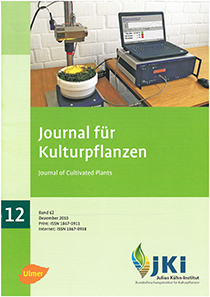Influence of anthropogenic copper pollution on soil microorganisms – an overview. II. Microbial activities
DOI:
https://doi.org/10.5073/JfK.2010.12.01Keywords:
Copper, pesticides, fungicide, soil, respiration, enzymatic activity, nitrogen fixation, nitrogen mineralization, nitrification, cellulose decompositionAbstract
Increased Cu contents in soil may result from natural sources. In many cases, however, they are induced by anthropogenic activities. Especially in some agricultural, horticultural, vineyard or orchard soils the long-term application of Cu-containing pesticides, fertilizers and sewage sludge caused increased copper contents. In forest soils, however, sometimes a very high Cu pollution (mostly together with other heavy metals) may result from industrial emissions. In addition to the already published first part of the review on microbial populations now some further influences of copper on microbial activities in soil are presented. They include activities of the carbon cycle (respiration, cellulose and litter decomposition), the nitrogen cycle (nitrogen fixation, mineralization, nitrification, denitrification), several enzymatic as well as some special activities like humus formation, aggregation of soil particles or degradation of pesticides. In addition the modification of the Cu effects by other pollutants are presented and possibilities to minimize the influence of copper itself, too. The distribution of the available publications to the themes, however, looks very heterogenic. Besides the effects of the copper content in soil on microbial activities also those of Cu-containing pesticides and several inorganic Cu compounds have been discussed in this review. Extremely high copper pollutions by industrial emissions, however, are only additionally included in some cases. Several effects of copper on most microbial activities in soil were found in the cited literature. This includes influences of those Cu doses occurring under practical conditions and even lower ones. Contradicting to this, however, in some publications very high Cu contents did not show measurable effects. As a result from the literature cited in both parts of the review and possibly increasing Cu contents in soil a restricted handling of Cu-containing pesticides and fertilizers is recommended and some ecotoxicological research deficits are presented.
Downloads
Published
Issue
Section
License
The content of the journal is licensed under the Creative Commons Attribution 4.0 License. Any user is free to share and adapt (remix, transform, build upon) the content as long as the original publication is attributed (authors, title, year, journal, issue, pages).
The copyright of the published work remains with the authors. The authors grant the Journal of Cultivated Plants, the Julius Kühn-Institut and the OpenAgrar repository the non-exclusive right to distribute and exploit the work.







